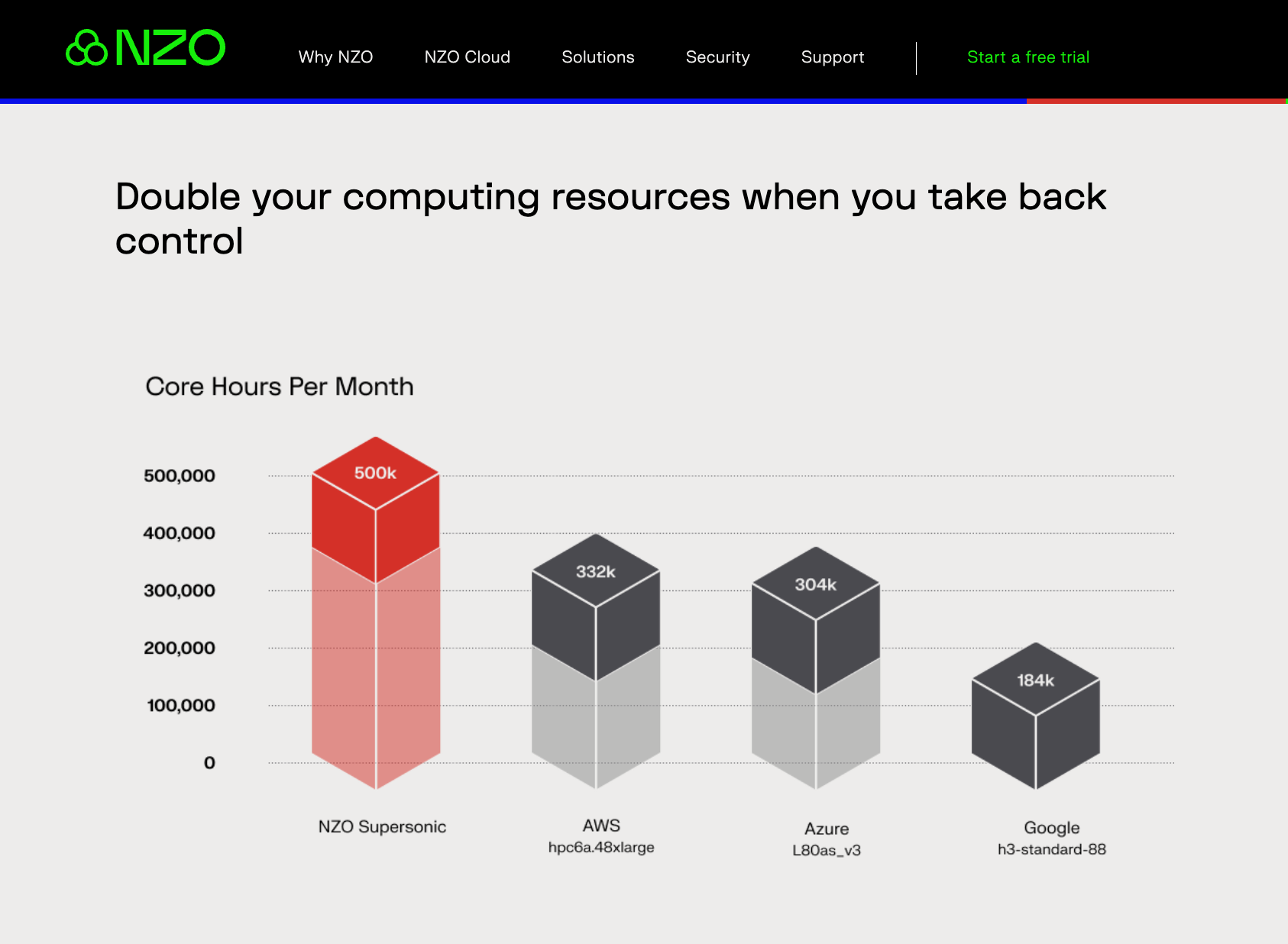Table of Contents

In today’s digital era, cloud computing has become an integral part of businesses around the world. As organizations increasingly rely on the cloud for their storage, computing, and networking needs, it is crucial to understand the intricacies of cloud cost management. This article will delve deep into the importance of effective cost management in cloud computing and strategies and best practices to optimize cloud spending and maximize returns on investment.
Importance of Effective Cost Management in Cloud Computing
Cloud computing offers numerous benefits, such as scalability, flexibility, and cost-effectiveness. However, organizations may face unexpected and escalating expenses without proper cost management. One of the key benefits of cloud services is the pay-as-you-go model, enabling businesses to pay only for the resources they use. Nevertheless, a lack of visibility and control over cloud spending can quickly lead to budget overruns. Cloud cost monitoring ensures optimal resource utilization, control, and alignment of cloud spending with business needs.
Effective cloud spend management involves implementing strategies to monitor and analyze usage patterns, identify cost-saving opportunities, and forecast future expenses. By leveraging cloud cost management tools and services, organizations can gain insights into their cloud spending, track usage trends, and make informed decisions to optimize costs. This proactive approach helps in controlling current expenses and planning for future growth and scalability without incurring unnecessary costs.
Cloud spend management goes beyond monitoring usage and expenses. It also involves implementing governance policies, establishing cost allocation mechanisms, and fostering a culture of cost awareness within the organization. By setting clear guidelines for resource provisioning, implementing automated cost controls that give greater cloud cost visibility, and educating stakeholders on cost implications, businesses can ensure efficient cloud cost management practices across their cloud environments. This holistic approach not only helps in reducing wastage and optimizing costs but also in maximizing the overall value derived from cloud investments.
Understanding Cloud Costs
Before diving into the various strategies for cloud cost management, it is essential to understand the components that contribute to cloud costs. Managing cloud spend can be broadly categorized into compute, storage, and network expenses.
When delving deeper into cloud costs, it’s important to consider additional factors that can impact pricing and optimization strategies. One such factor is the concept of reserved instances, where users commit to a specific instance type for a contracted period, often resulting in cost savings compared to on-demand pricing. Understanding your cloud applications’ utilization patterns and workload requirements can help effectively leverage reserved instances to optimize costs.
| Cost Category | Description | Cost Considerations |
| Compute Costs | Costs associated with processing power and virtual machine instances. Offers a variety of instance types, from general-purpose to high-performance. | – Auto-scaling optimizes cloud cost visibility by adjusting resources based on workload demands.
– Spot instances offer discounted rates for non-time-sensitive workloads. |
| Storage Costs | Pertains to the amount of data stored in the cloud, with options like object storage, block storage, and file storage. | – Costs vary based on capacity, data transfer, and storage type.
– Data lifecycle management (tiering, archiving, deletion) can reduce costs. |
| Network Costs | Encompasses data transmission within the cloud and external transfers, including both inbound and outbound data. | – Costs vary by data volume and geographic regions.
– Leveraging CDNs can reduce latency and data transfer costs for distributed applications. |
Breakdown of Cloud Computing Costs
Now that we understand the different components of cloud costs let’s delve deeper into each category.
Cloud cost visibility can be further broken down into several key areas, each playing a crucial role in determining the overall expenses incurred by organizations utilizing cloud services. Understanding these cost components is essential for effective cost management and optimization strategies.
1. Compute Costs
Compute costs are a significant aspect of cloud expenses, typically calculated based on the amount of time an instance is running and the instance type chosen. On-demand instances provide flexibility but come at a higher cost, while reserved instances offer significant savings for long-term usage commitments. Spot instances, on the other hand, provide the lowest cost but may not be suitable for workloads with strict time constraints.
How organizations can optimize compute costs:
Optimizing compute costs involves selecting the right instance types based on workload requirements, implementing auto-scaling to adjust resources based on demand, and utilizing cost monitoring tools to track usage patterns and identify opportunities for cost savings.
2. Storage Costs
Storage costs in cloud computing vary based on the type of storage employed and the amount of data stored. Object storage, commonly used for backups and data archiving, provides cost-effective long-term storage. Block storage offers high-performance storage for databases and applications, while file storage is ideal for shared file systems.
How organizations can optimize storage costs:
Organizations can optimize storage costs by implementing data lifecycle management strategies, tiering data based on access frequency, and leveraging compression and deduplication techniques to reduce storage requirements. Understanding data access patterns and requirements is crucial for selecting the right storage solutions and minimizing costs.
3. Network Costs
Network costs play a significant role in cloud expenditure and are determined by the volume of inbound and outbound data transfer. Cloud providers typically charge for data transfer between regions and data transfer outside the cloud environment.
How organizations can optimize network costs:
To reduce network costs, organizations can optimize data transfer by implementing efficient data routing strategies, utilizing caching mechanisms to reduce repetitive data transfer, and leveraging content delivery networks (CDNs) for content distribution. Monitoring network usage patterns and optimizing data transfer processes are essential for controlling network costs and ensuring efficient resource utilization.
Factors Influencing Cloud Costs

While the breakdown of cloud costs provides a comprehensive understanding, it is crucial to consider the various factors that influence cloud spending.
Cloud costs can also be influenced by the type of services utilized within the cloud environment. Different services such as storage, computing power, and networking, can have varying price structures. Understanding the cost implications of each service can help organizations make informed decisions when architecting their cloud solutions.
1. Resource Usage
Resource usage directly impacts cloud costs. Underutilized resources not only waste money but also hinder performance. By monitoring and optimizing resource usage, organizations can ensure they are only paying for what they actually need.
Furthermore, scaling resources based on demand can help prevent over-provisioning, leading to cost savings. Implementing auto-scaling mechanisms that adjust resource allocation dynamically can ensure optimal performance while controlling costs.
2. Data Transfer
Transferring data between different components of the cloud architecture or between the cloud and external systems incurs costs. Minimizing unnecessary data transfer and optimizing data flow can help reduce cloud spending.
Utilizing data compression techniques and caching mechanisms can also help lower data transfer costs. Organizations can achieve cost efficiencies in their cloud operations by reducing the amount of data transmitted and optimizing data transfer protocols.
3. Region
The geographic region in which cloud resources are provisioned can affect costs. Cloud providers may charge different rates for resources located in different regions. By carefully selecting the appropriate region based on business requirements, organizations can optimize costs.
Moreover, considering factors such as data sovereignty laws, latency requirements, and disaster recovery strategies can influence the choice of region for deploying cloud resources. By aligning these considerations with cost optimization goals, organizations can strike a balance between performance, compliance, and expenditure in their cloud deployments.
Common Pricing Models Used by Cloud Service Providers
Understanding the pricing models employed by cloud service providers is vital for effective cost management.
Cloud service providers offer a variety of pricing models to cater to the diverse needs of businesses. In addition to the commonly used models like on-demand pricing, reserved instances, and spot instances, there are other innovative approaches emerging in the cloud computing landscape. One such model is pay-as-you-go pricing, where organizations pay only for the resources they consume without any upfront commitment. This flexible model is ideal for businesses with fluctuating workloads or short-term projects.
- On-demand pricing: This model charges based on the compute instances, storage, and network resources used. Organizations are billed per hour or per minute.
- Reserved instances: Reserved instances allow businesses to commit to long-term usage in exchange for significant cost savings. With reserved instances, organizations pay an upfront fee or commit to a contract, securing lower pricing.
- Spot instances: Spot instances offer the lowest pricing but come with the risk of termination when the spot price exceeds the bid price set by the customer.
Another emerging pricing model is hybrid pricing, which combines elements of different models to provide a tailored approach for businesses with complex requirements. In this model, organizations can mix and match on-demand, reserved, and spot instances to optimize costs based on workload characteristics and budget constraints. By leveraging hybrid cloud cost management, businesses can achieve a balance between cost-effectiveness and performance efficiency.
Challenges in Cloud Cost Management and Optimization
While organizations recognize the importance of cloud cost management, several challenges hinder the ability to optimize cloud spending.
Cloud cost monitoring is a multifaceted task that requires a deep understanding of the organization’s cloud usage patterns, cost drivers, and optimization opportunities.
One significant challenge in cloud cost management is the lack of standardized cost visibility across different cloud service providers and resources. Organizations often struggle to consolidate and analyze cost data from various sources, making it difficult to gain a comprehensive view of their cloud spending.
Lack of Visibility into Cloud Spending
Without a clear understanding of cloud spending, organizations cannot effectively manage costs. A lack of visibility may result in overspending, unnecessary resource allocation, and missed opportunities for cost optimization.
Furthermore, the lack of granular visibility into individual resource costs and usage patterns can hinder organizations from identifying cost-saving opportunities at a detailed level.
Difficulty in Predicting and Controlling Costs
The dynamic nature of cloud computing makes it challenging to predict and control costs accurately. Organizations face difficulties in estimating future usage and forecasting expenses, leading to budget overruns and cost control issues.
Moreover, the complexity of cloud pricing models, which often involve various factors such as data transfer costs, storage fees, and compute charges, adds another layer of difficulty to cost prediction and control.
Cost Optimization Trade-offs
While optimizing costs is crucial, organizations must make trade-offs between cost reduction and performance. Overemphasizing cost reduction without considering performance implications can negatively impact user experience and business operations.
Striking the right balance between cloud cost monitoring and optimization, as well as performance, requires a holistic approach that considers factors such as application requirements, workload characteristics, and business objectives.
Strategies for Cloud Computing Cost Management

To overcome the challenges in cloud cost management, organizations can leverage various strategies to optimize spending and maximize ROI.
Cloud computing has revolutionized the way organizations manage their IT infrastructure. However, with the flexibility and scalability that the cloud offers comes the challenge of managing costs effectively. In this section, we will explore some strategies that organizations can implement to tackle this challenge head-on.
Right-sizing Resources to Match Workload Demands
Right-sizing involves aligning cloud resources with workload demands. Organizations can optimize costs and reduce waste by regularly analyzing resource usage patterns and adjusting instance sizes accordingly. This strategy ensures that resources are neither underutilized, leading to unnecessary expenses, nor overprovisioned, resulting in wasted resources.
For example, by closely monitoring CPU and memory utilization, organizations can identify instances that are consistently underutilized and downsize them to a more appropriate size. On the other hand, instances experiencing high utilization can be upsized to avoid performance bottlenecks.
Leveraging Reserved Instances and Spot Instances for Cost Savings
Reserved instances provide significant savings for workloads with predictable usage patterns. By committing to long-term usage, organizations can achieve lower rates and reduce costs. Spot instances, on the other hand, offer the lowest pricing and can be used for non-critical workloads or for tasks that can tolerate interruptions.
Organizations can strategically mix and match reserved instances and spot instances to optimize costs. For example, reserved instances can be used for workloads with steady usage, while spot instances can be utilized for bursty workloads or non-production environments.
Implementing Auto-scaling and Load Balancing for Efficient Resource Utilization
Implementing auto-scaling and load balancing enables organizations to dynamically adjust resource allocation based on real-time demand. By automatically scaling resources up or down, organizations can optimize costs by only provisioning resources when needed.
Auto-scaling allows organizations to scale resources based on predefined rules and thresholds. For example, during periods of high demand, additional instances can be automatically provisioned to handle the increased workload. Conversely, during periods of low demand, excess instances can be automatically terminated to avoid unnecessary costs.
Utilizing Serverless and Containerization Technologies
Serverless computing and containerization technologies, such as Docker and Kubernetes, offer efficient resource utilization. By leveraging these technologies, organizations can reduce costs by paying only for the actual resource consumption.
Serverless computing eliminates the need to provision and manage servers, allowing organizations to focus on code development. With serverless, organizations are billed based on the actual execution time and resources consumed by their applications. Similarly, containerization technologies enable organizations to package applications and their dependencies into lightweight containers, resulting in efficient resource utilization.
Monitoring and Optimizing Data Transfer Costs
Data transfer costs can add up significantly, especially in scenarios involving high volumes of data transfer or cross-region data transfer. By monitoring data transfer patterns and optimizing data flow, organizations can minimize unnecessary costs.
Organizations can implement strategies such as data compression, caching, and content delivery networks (CDNs) to reduce data transfer costs. Additionally, optimizing data transfer routes and leveraging cloud provider-specific services can further optimize costs.
Implementing Cost Allocation and Tagging for Accountability
Implementing cost allocation and tagging practices allows organizations to track and allocate cloud costs to specific projects, teams, or departments. This promotes accountability and provides insights into spending patterns, enabling better cost-optimization decisions.
By assigning tags to cloud resources, organizations can easily identify the cost associated with each resource and attribute it to the appropriate project or team. This level of visibility enables organizations to identify areas of high spending and take necessary actions to optimize costs.
Best Cloud Cost Management Tools
Several cloud cost management platforms and tools are available to help organizations effectively monitor and optimize cloud spending.
Overview of Cloud Cost Management Platforms
A variety of cloud cost management software, such as AWS Cost Explorer, Azure Cost Management, and Google Cloud Billing, offer comprehensive dashboards and reporting functionalities for tracking and analyzing cloud costs. These platforms provide insights into cost trends, resource utilization, and cost allocation.
For example, AWS Cost Explorer allows users to visualize and understand their AWS costs through interactive charts and graphs. It provides cost breakdowns by service, region, and usage type, enabling organizations to identify areas of high spending and take necessary actions to optimize costs. On the other hand, Azure Cost Management offers similar capabilities for managing costs in the Microsoft Azure cloud, allowing users to track spending across different Azure services and subscriptions.
Google Cloud spend management in the form of Google Cloud Billing provides detailed reports on cloud usage and costs, allowing organizations to gain visibility into their Google Cloud Platform expenses. It offers cost insights by project, service, and SKU, enabling businesses to make informed decisions and optimize their cloud spending.
However, the unpredictability of cloud cost is where these platforms often fall short. Unused instances in AWS, among other hidden costs, can quickly deplete your monthly budget—and exceed it. The other two popular platforms unfortunately present similar challenges—even though they offer detailed spend reports, staying within those parameters is difficult on a monthly basis without manual babysitting. With NZO Cloud, cost control for your cloud environment is easy: simply choose a plan that matches your usage and computing performance requirements and gain peace of mind that you’ll never exceed your monthly budget.
Features and Functionalities of Leading Cost Monitoring Tools
Leading cloud cost monitoring tools, such as CloudHealth by VMware, CloudCheckr, and RightScale, offer granular cost visibility, budget management, and cost optimization recommendations. These tools provide automated cost monitoring, anomaly detection, and cost-saving opportunities.
CloudHealth by VMware, for instance, offers a wide range of features to help organizations manage their cloud costs effectively. It provides detailed cost breakdowns, customizable reports, and budget alerts to ensure businesses stay within their budget. Additionally, CloudHealth offers recommendations for cost optimization, such as rightsizing instances and leveraging reserved instances, to help organizations maximize their cloud investments.
Similarly, CloudCheckr offers comprehensive cloud cost management capabilities, including cost allocation, chargeback, and cost anomaly detection. It allows organizations to allocate costs to different departments or projects, enabling better cost accountability and financial planning. CloudCheckr also provides automated alerts for unusual spending patterns, helping businesses promptly identify and address cost anomalies.
RightScale, another leading cloud cost monitoring tool, offers a unified dashboard for managing costs across multiple cloud providers. It provides visibility into costs, utilization, and performance metrics, allowing organizations to optimize their cloud spending based on real-time data. RightScale also offers cost-saving recommendations, such as scheduling non-production instances to run only during business hours, to help organizations reduce unnecessary expenses.
Here’s a table summarizing the features and capabilities of leading cost-monitoring tools:
| Tool | Features | Cost Optimization Capabilities |
| CloudHealth by VMware | – Detailed cost breakdowns
– Customizable reports – Budget alerts |
– Recommendations for rightsizing instances
– Leveraging reserved instances to maximize investments |
| CloudCheckr | – Cost allocation
– Chargeback – Cost anomaly detection |
|
| RightScale | – Unified dashboard for managing costs across multiple clouds
– Visibility into costs, utilization, and performance metrics |
– Cost-saving recommendations such as scheduling non-production instances to run only during business hours |
NZO Cloud: Helping You Manage Cloud Computing Costs

Modern high-performance computing (HPC) deployments demand significant customization and control to meet business requirements effectively. Traditional cloud HPC services often force businesses to adjust their established processes, software integrations, and customizations to align with predefined service models, complicating deployments. Additionally, the common pay-per-use pricing models from most HPC vendors, complete with complex cost calculators, make it challenging to forecast monthly expenses, potentially leading to budget overruns due to fluctuating usage costs.
NZO Cloud offers a different approach with several advantages for businesses:
- Customized deployments: Unlike traditional services that require businesses to conform to rigid models, NZO Cloud offers fully customized deployments that are specifically tailored to include only what your business needs, ensuring optimal alignment with your operational requirements.
- Transparent costs: Unlike the major HPC providers that use pay-per-use pricing, NZO Cloud employs a straightforward subscription pricing model. This predictability in costs helps businesses manage their budgets more effectively, as they know exactly what they will be charged each month.
- Dedicated support: Where large providers like Google, Microsoft, or Amazon might require customers to seek third-party help for technical support, NZO Cloud provides direct access to onboarding and security engineering teams. This ensures businesses receive the necessary support to maintain a smoothly operating cloud environment.
Best Practices for Cloud Cost Management

Cloud computing has become a critical component of modern IT strategies, offering scalability, flexibility, and a wide array of services that can significantly improve business operations. However, managing cloud costs effectively is crucial to ensuring that businesses can enjoy the benefits of cloud computing without overspending. Here are some best practices for effective cloud cost management.
1. Establishing Clear Cost Governance Policies and Processes
Effective cost governance is foundational to successful cloud cost management. It involves setting up clear policies and procedures that govern how cloud resources are requested, allocated, and used within an organization.
- Define cost ownership: Assign clear responsibility for costs to departments or teams. This helps in making parties accountable for their cloud usage and expenses.
- Implement budgets and alerts: Use cloud management tools to set budget limits and alerts to prevent unexpected overspending.
- Establish usage policies: Define what types of cloud services can be used, by whom, and for what purpose to avoid unnecessary or unauthorized use of expensive resources.
2. Conducting Regular Cost Reviews and Analysis
Regularly reviewing and analyzing cloud spending is crucial to understanding how cloud resources are used and how they can be optimized.
- Monthly reviews: Conduct detailed reviews of cloud expenses each month to track trends, spot anomalies, and identify optimization opportunities.
- Utilize cost analytics tools: Leverage tools provided by cloud service providers like AWS Cost Explorer, Azure Cost Management, or third-party tools to gain deeper insights into your cloud spending patterns.
- Identify underutilized resources: Regular analysis helps in identifying idle or underutilized resources which can be downsized, shut down, or reserved to cut costs.
3. Involving Stakeholders in Cost Management Decisions
Cloud cost management should be a collaborative effort involving various stakeholders from IT, finance, and the departments that heavily use cloud resources.
- Cross-departmental meetings: Regular meetings with all stakeholders can help ensure that everyone understands the cost implications of their usage and the importance of staying within budget.
- Training and awareness: Educating users on the cost of resources and simple steps they can take to use cloud resources more efficiently can significantly reduce wastage.
- Feedback loop: Encourage stakeholders to provide feedback on cloud usage and cost-saving measures. This can help in refining policies and processes.
4. Continuous Improvement and Optimization of Cost Management Strategies
The cloud landscape is dynamic, with prices and services changing frequently. Continuously improving and optimizing cost management strategies is key to controlling cloud costs.
- Adopt reserved Instances and savings plans: For predictable workloads, use reserved instances or savings plans to save costs. These options provide significant discounts compared to on-demand pricing.
- Right-sizing resources: Continuously monitor and adjust configurations to ensure that resources are correctly sized to meet workload demands without overprovisioning.
- Automate to optimize: Implement automation for turning off unused resources during off-hours and scaling down during low usage periods.
By implementing these best practices, organizations can effectively manage their cloud costs, ensuring they harness the power of cloud computing economically and efficiently. This proactive approach reduces expenses and aligns cloud usage with business goals, maximizing the return on investment.
Conclusion
Effective cloud cost management is crucial for businesses looking to capitalize on the benefits of cloud computing without succumbing to unchecked expenses. By understanding the components of cloud costs, recognizing the challenges involved, and implementing strategic measures to manage and optimize these costs, businesses can achieve a balanced approach to cloud usage that supports their operational goals and budgetary constraints. With the right tools and strategies in place, organizations can transform potential financial pitfalls into strategic advantages, ensuring they get the most out of their cloud investments.
Start a free trial for NZO Cloud today to discover how our software can boost your productivity while giving you peace of mind with cloud cost management.




